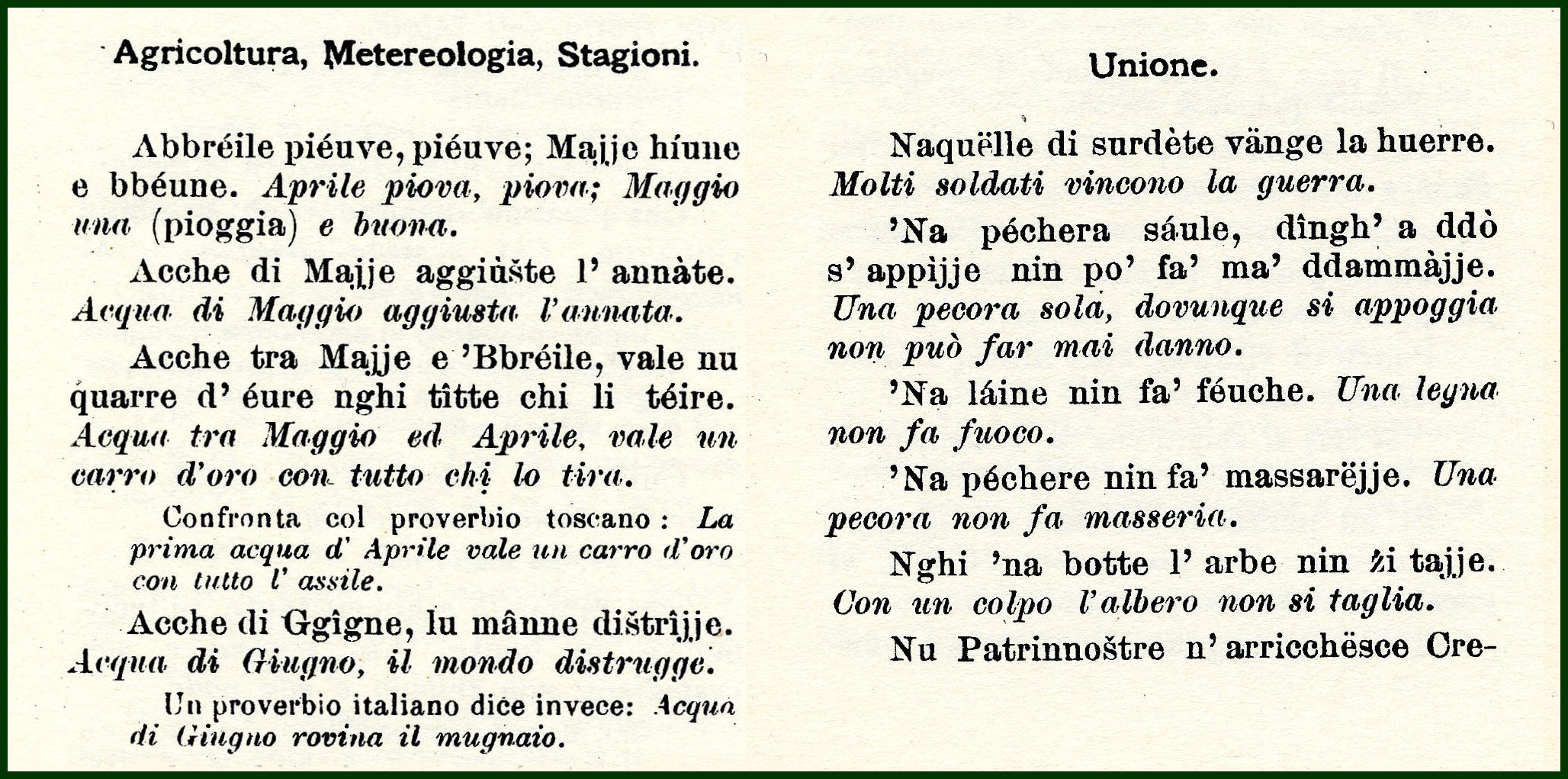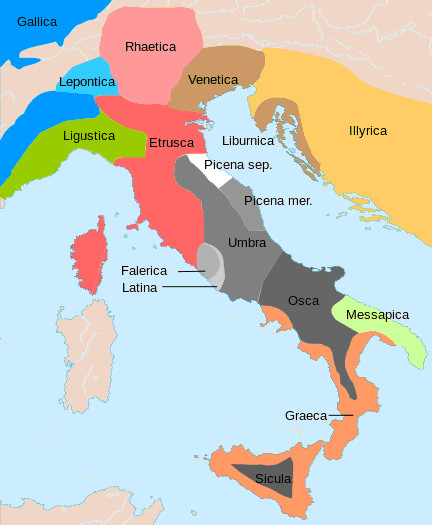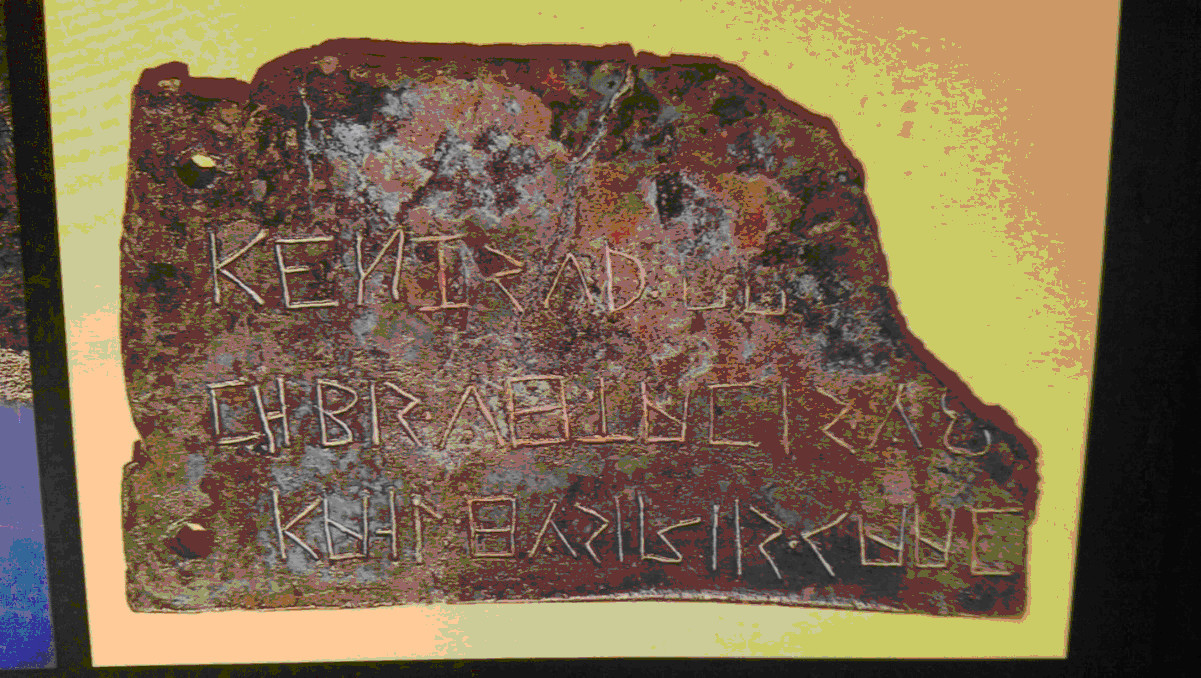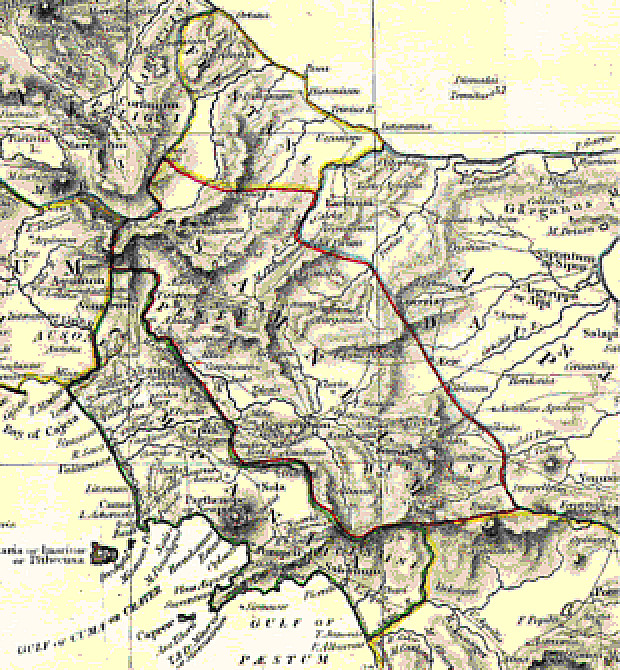Introduction to the language of Vasto
Ray La Verghetta
The name of the language
The language spoken in Vasto is called Uâʃtaréule. The name of the language derives from the name of the area in which it is spoken – lu Uâʃte (Vasto, in the province of Chieti) – so called in the language spoken there. The use of the name goes back to about the sixth century AD.
Lu Uâʃtaréule as a language
Lu Uâʃtaréule does not appear in the official lists of the languages of the world. However, it is not a mere dialect of Italian; it is a language in its own right. It does not appear in these lists because the documentation necessary to have it included has not yet been completed. The key criterion by which linguists differentiate dialects from languages is that of mutual intelligibility. On the basis of this criterion, the variety in question is a language in its own right because monolingual speakers of standard Italian are unable to understand it. This is also the case for dozens of other linguistic varieties that co-exist with standard Italian on the Italian peninsula. Although Italians popularly refer to these linguistic varieties as dialects, they are actually bona fide languages. The use of the term “dialect” in these cases is a linguistic imprecision that is also found in much scholarly work and in many other parts of the world. For example, the inhabitants of the Chinese mainland refer to Mandarin and Cantonese as “dialects” of Chinese, although linguists understand that they are separate languages, because they are not mutually intelligibile. Regarding the case of the Italian peninsula, the linguists Laura e Giulio Lepschy write, in their book The Italian language today: “When people talk of Italian dialects they are not usually referring to different varieties of Italian. Italian dialects differ from literary Italian and among themselves so much that one dialect may be unintelligible to the speaker of another dialect. They may differ among themselves as much as French differs from Spanish, or Portuguese from Romanian, or for that matter English from Italian.” (1)
Demography
Today Uastareule is spoken monolingually by diminishing numbers of octogenarians and nonagenarians. It is spoken bilingually by a small number of residents in their seventies. Many middle-aged residents have a passive competence in the language – they can understand it but are unable to actively use it. Young people have virtually no competence of any kind in the language.
Genetic Affiliation
Uastaréule is a member of the Romance sub-branch of the Indo-European family of languages. It evolved from Latin independently though in parallel with other Latin-derived languages spoken in Europe (Spanish, French, Portuguese, etc.) and on the Italian peninsula, such as Neapolitan, Venetian, Calabrian, Piedmontese, etc.
Lu uâʃtaréule among the “dialects” of Italy
On the Italian peninsula, lu uâʃtaréule belongs to the group of intermediate central-south “dialects”, that is, those including the “dialects” of Abruzzo, northern Puglia, Molise, Campania, and Basilicata. Although these “dialects” are rather different among themselves, there are some common traits that they share, including the neutralization of final vowels followed by metaphony.
Sociolinguistic Situation: Multilingualism and Contexts of Use
Uastaréule is one of the many Latin-derived languages on the Italian peninsula that is on the way to extinction,having been overtaken by Italian. As is the case in most such varieties, age stratification delineates usage and knowledge: elderly residents (in their eighties and nineties) are the only age-group that understands and actively uses Uastaréule. This group can be divided into two sub-groups: a small number of monolingual Uastaréule speakers, who are usually the oldest surviving speakers, and a larger number of bilingual (Uastaréule/Italian) speakers, most commonly in their eighties. Middle-aged residents have a passive understanding of the variety – they can mostly understand it when they hear it, but their active proficiency is minimal or non-existent. Young people typically have little to no competence of any kind in the language. The use of the language by the bilingual elderly can be broadly characterized as diglossic. They use it primarily when speaking in informal settings with family members, relatives, neighbors, and acquaintances of the same age group. However, in their interactions with the larger community, such as for shopping, paying bills, talking to younger people in town, etc. they speak Italian.
Sociolinguistic Situation: Dialects
There was never a standard version of uâʃtaréule, so there was never one official variety. Instead, there were multiple varieties or dialects, whose differences correlated mainly with geography. Broadly speaking, one variety could be distinguished in the “coastal” area, where fishing was the principal way of earning a living. There was also a variety used in the city center, located uphill from the “marine” area, where tradesmen, including bricklayers, blacksmiths, bakers, shoemakers and others resided. Finally, there was a version that characterized the speech of more rural areas, where farmers and truck farmers lived and worked. These varieties were marked primarily by phonological, morphological, and orthographic differences.
Linguistic Substrate
It is very likely that the substrate languages influenced the Vastese language, largely through their influence on Latin. However, it is also likely that Vastese itself reflects substrate influences, apart from any influence on Latin. The substrate languages involved, that is, those that were spoken in the area of Abruzzo before the arrival and development of Latin, are the Oscan languages. (2)




